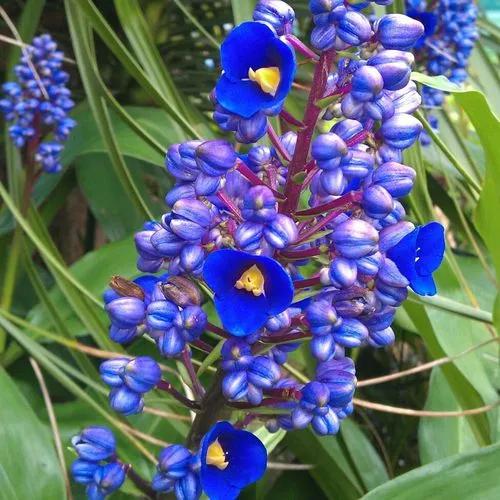Ficus elastica is one of the most beloved ornamental houseplants for all the good reasons! This green pet is easy to care for and is pure aesthetic when it comes to urban jungle designs.
Rubber Plant Care
Ficus elastica robusta



Ficus elastica, indigenous to Southeast Asia, is a tropical arboreal specimen and an honorable member of the Moraceae family. Distinguished by its voluminous, coriaceous leaves, the rubber plant showcases an array of green hues. Notably, its value extends beyond mere aesthetics. It's also an excellent air purifier!
How to Care for the Plant

Water

During the period of active growth, the Ficus is watered abundantly. In early September, however, the watering is reduced; in winter, it is enough to water once a week or less.

Pruning

The branches of the plant are normally pruned every 2-3 years to control the plant's height. When pruning, Ficus secretes milky juice, which should be removed with a cloth or cotton wool soaked in warm water.

Fertilizer

The optimal fertilizer blend for rubber plants comprises 24% nitrogen, 8% phosphorus, and 16% potassium. Tailor your fertilization schedule according to the lighting conditions. The best schedule is about once or twice a month in the growing season.

Sunlight

This is a light-loving plant, but direct exposure to the sun affects it. 6-8 hours of diffused light should keep your greenie happy.

Soil

This greenie prefers breathable and fertile soils. One of the best compositions is a peat-bark-sand mix.

Propagation

Rubber plant propagation? Piece of cake! Snip around 4 in. (10 cm) cuttings from the tips, lose the lower leaves, and put them in water for 30 minutes – a mini spa session for your future rubber plant.
Grab some moist compost, tuck the soaked cuttings in, and seal the pot with a clear plastic bag. Keep it bright, but dodge direct sun. Voila! Your rubber plant cuttings are on their way to become their future tall selves!

Temperature

The comfortable air temperature for Ficus is 65-85°F (18-30 °C); in winter — the plant won't feel good if the temperature goes lower than 60°F (15°C).

Container

Ficus elastica prefers to be a little root-bound for its optimal development. We recommend choosing a pot which is approximately ⅓ bigger than the root system of your plant. Don't forget to repot it every two years into bigger pots – growing in the limited space for a long time will affect the growth rate of the plant.

Fun fact

In the wild, the rubber tree grows to 100 to 130 ft (30-40 m) and can live up to 100 years. Its best-known feature is the milky white sap known as latex, which flows freely from the tree when a piece of bark is removed.

Popularity

220,444 people already have this plant 18,460 people have added this plant to their wishlists

Common pests

The Rubber Plant is distinguished by relatively high resistance to various diseases and pests. Very rarely do spider mites or scale insects settle on Ficus Elastica. If this happens, rinse the foliage with an infusion of tobacco dust. To prepare, mix 1 liter of water with 4 tbsp. l. dust, and a small amount of soap. A couple of hours after applying the solution to the foliage, it is washed with clean water. If scale insects have settled on the bush, then before processing, try to remove all pests from it, and use a regular cotton swab. And remember: if leaves are kept clean, the plant cannot suffer from pests, as they bypass it. Thus, do not forget about regular wipings.

Frequent diseases

Due to improper care or inappropriate conditions for the flower, the following problems may also take place:
- Loss of foliage
If only the lower leaves fall off, then there is no need to worry because this is an entirely natural process associated with the plant's aging. However, if it is not the case, underwatering or overwatering, poor lighting or a sharp temperature change might be the reasons.
- Leaves getting yellow
As a rule, leaves first turn yellow, die off, and fall off. However, foliage can also change color to yellow due to excessive nutrients in the soil. In this case, rinse the potting mix: add a volume of water that could fill 3 such empty plant pots in which the Ficus grows. After rinsing, feeding is suspended for 8 weeks. Also, it is important not to water the plant again until the potting mix dries to avoid root rotting.
High salinity might be another reason for the change of color. Replanting into fresh soil will help. Huge containers can also cause yellowing of the foliage – do not select too big pots. Finally, yellow leaves can signify that rot has appeared on the roots. If you smell the soil mixture, then it will smell like rot. In this case, remove all the rotten root areas with a sterile and sharp instrument.

Botanist’s tips

Discover more plants with the list below
Related articles






